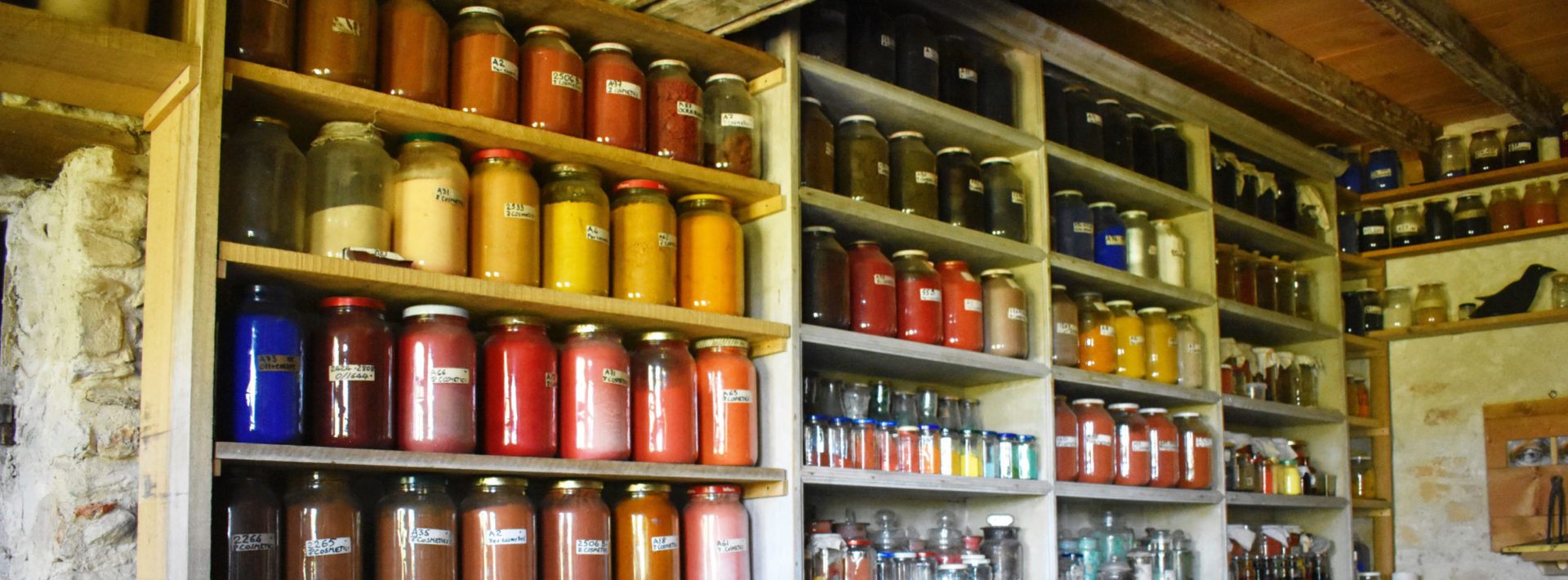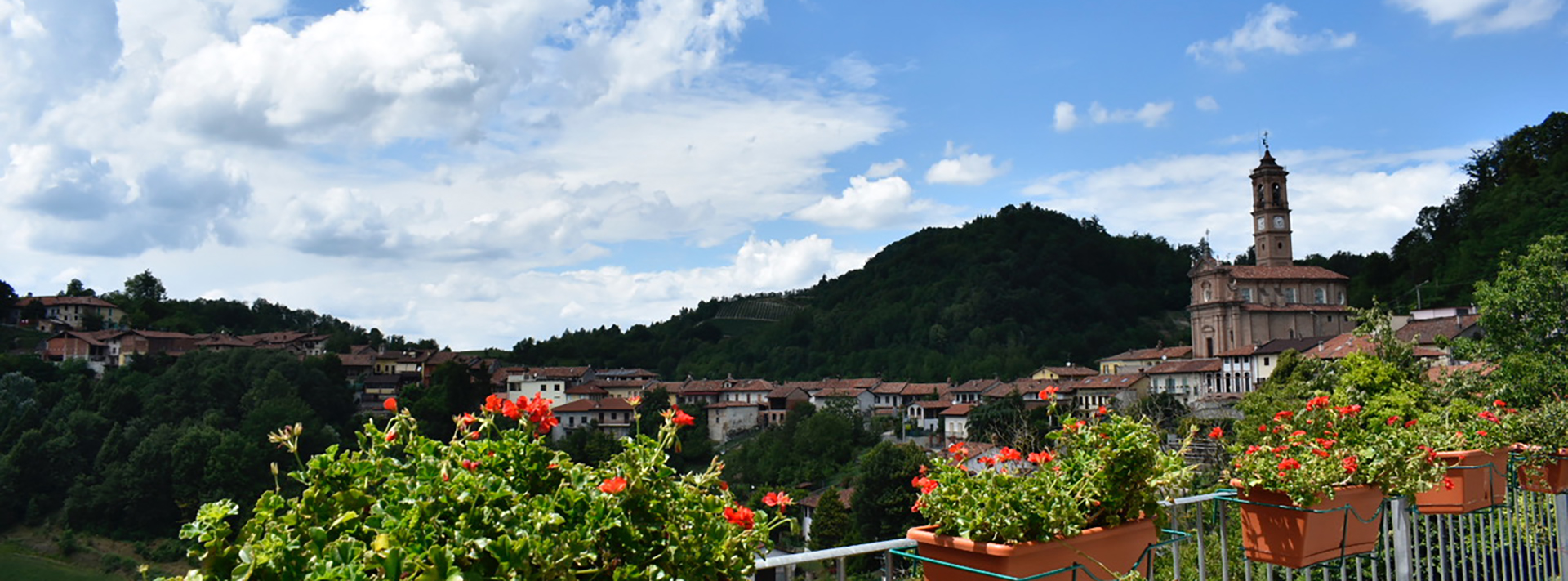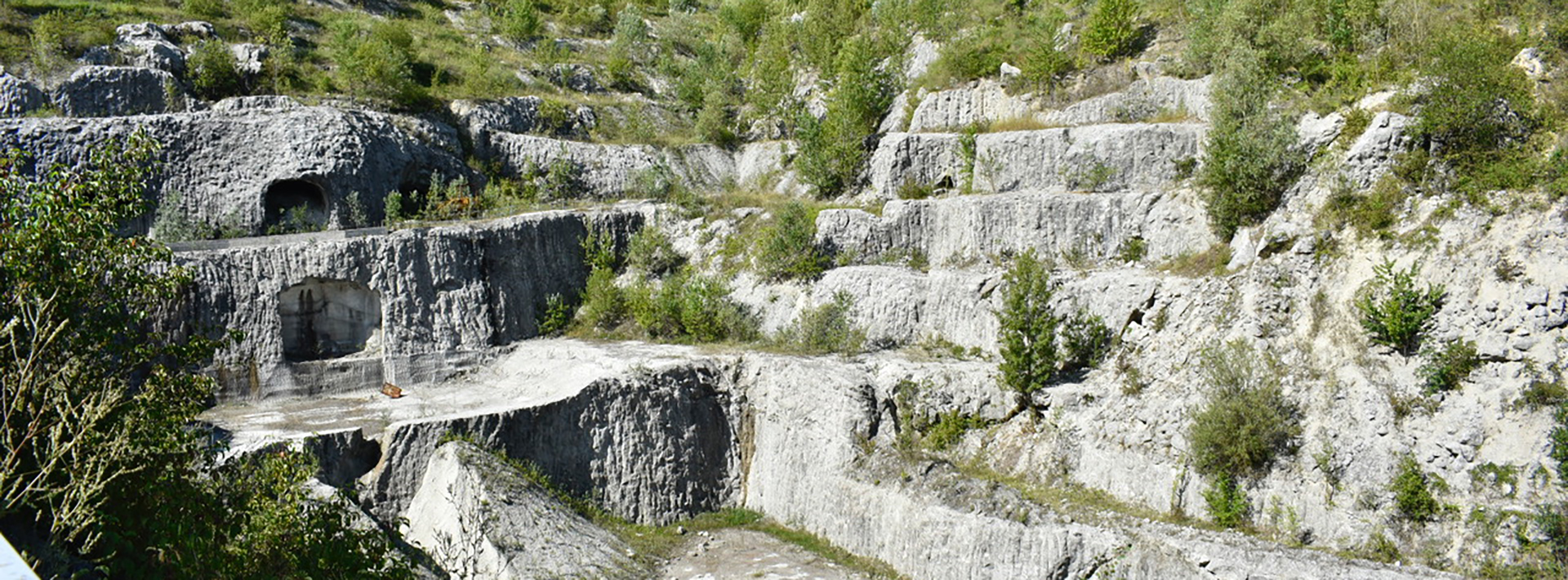ONE-MA3 2017: Fresco

[fusion_text]By Sierra Rosenzweig
Day two in Aramengo was dedicated to learning about the fresco-making process and creating our own frescoes. In the morning, we walked through the studio of Gianluigi Nicola, one of the town’s fresco-painters. We looked at his personal collection of pigments and got inspiration for our own creations.

Gianluigi Nicola’s collection of pigments. There were even more shelves full of them on the other side of the room!
We then set off to mix our own paints. We each took pigment, labeled it, mixed it with water, and spread the newly made paint on a box marked with the pigment’s label, so we could document the color of the paint when it was spread and dry. After doing this process with all of our pigments, we had a catalogue of all of our paint colors!

Making paint from powdered pigment and spreading it onto labeled boxes
The next step in fresco making was to sketch our design on paper. While some of us worked on drawing people or scenery from Aramengo, a few of the ONE-MA3 students decided to draw goats. As a surprise for the group, our TAs Chad and Linda found live goats and brought them back to pose as models!

Chad and Linda bring goats to model for our sketches
The final steps in our fresco making process were transferring our sketches onto mortar and painting over them. After hours of painting, the group produced a beautiful batch of both small and large frescoes, ready for us to take home and enjoy!

A few of ONE-MA3’s newly made frescoes!
This summer, Professor Admir Masic is leading a program on Materials in Art, Archaeology and Architecture (ONE-MA3), in which MIT undergraduates are conducting three weeks of fieldwork in Privernum, Pompeii and Turin as a prerequisite for the Fall 2017 MIT course, 1.057 Heritage Science and Technology. The program involves real-world analysis of ancient infrastructures and materials and focus on teaching ways to improve sustainability of the future through the study of ancient successes. [/fusion_text]



